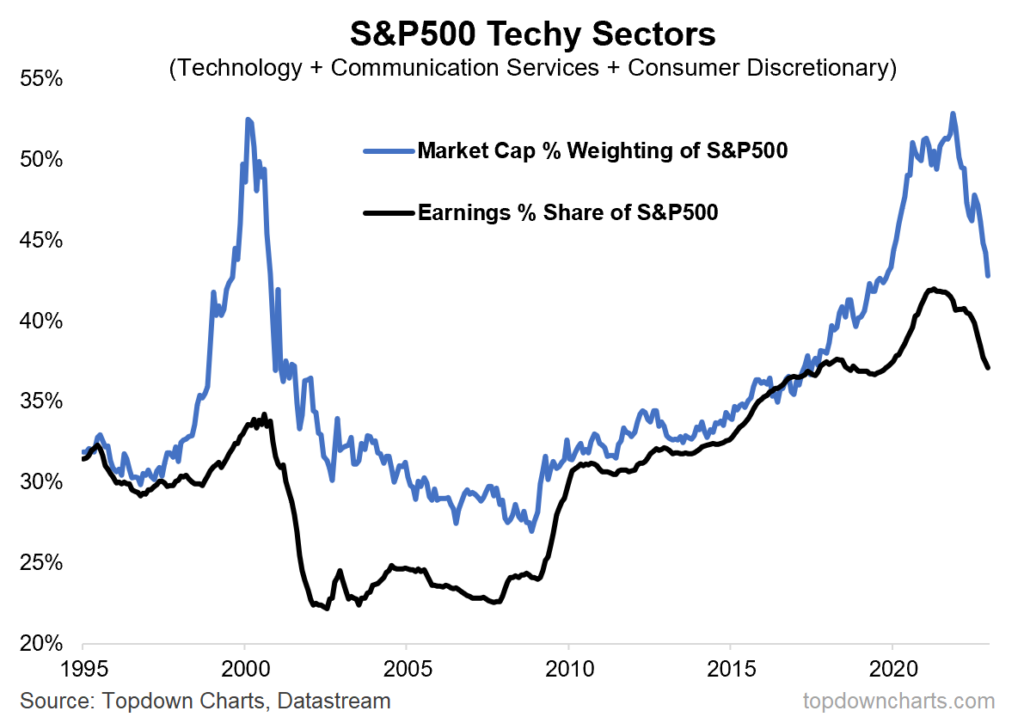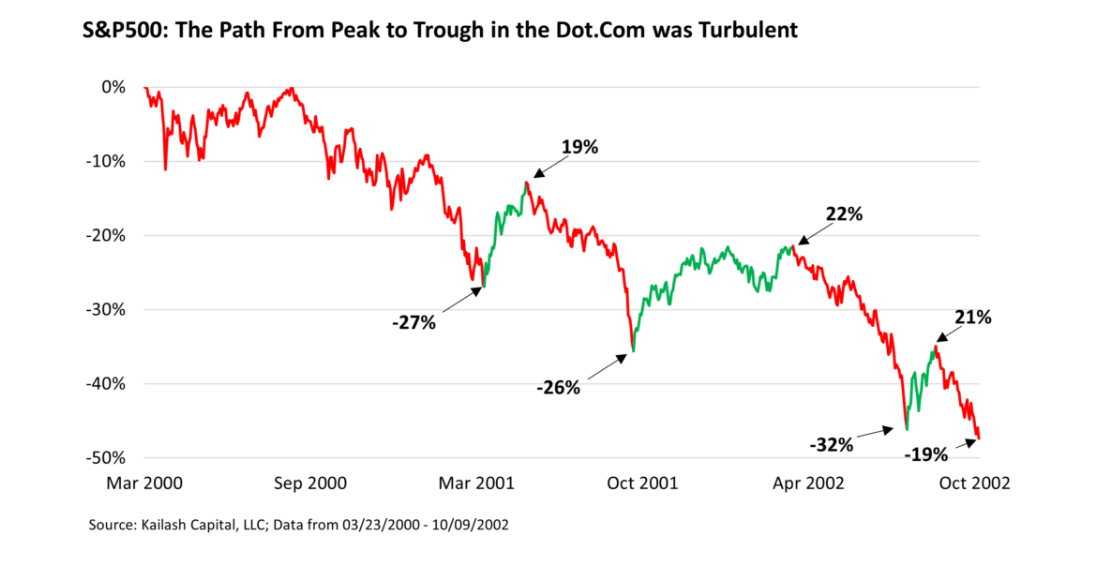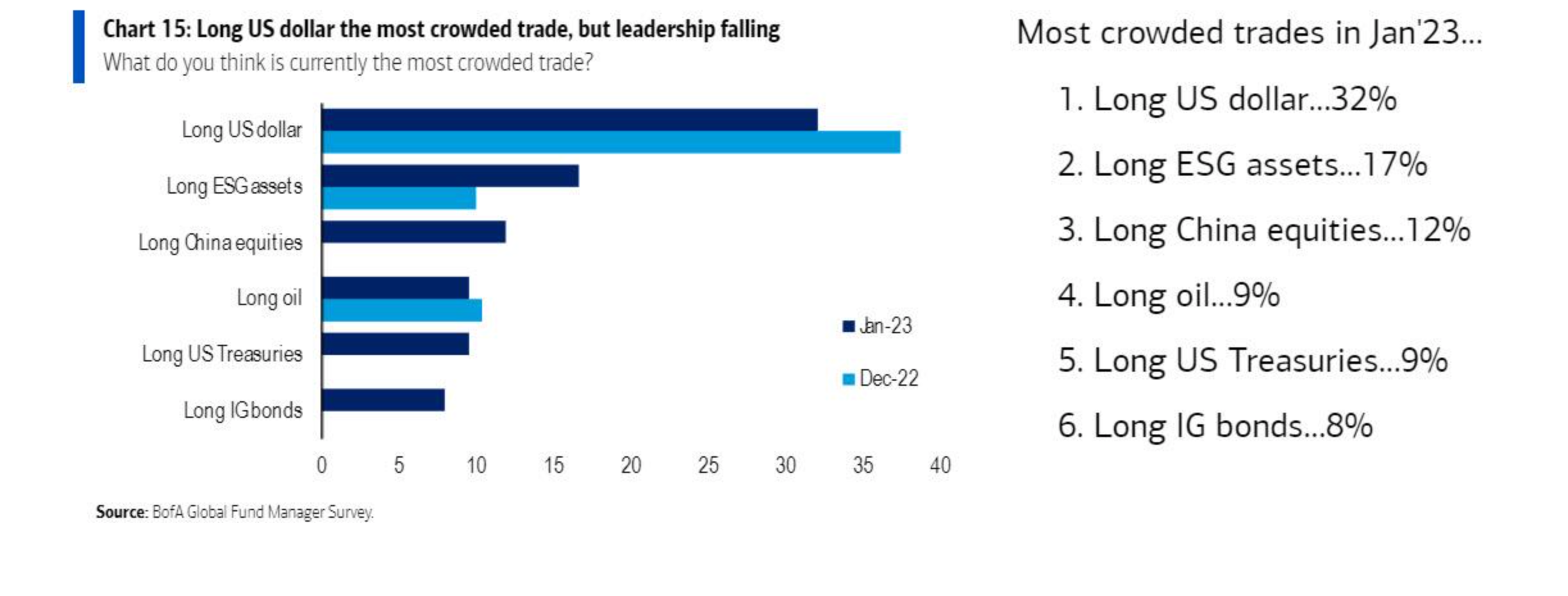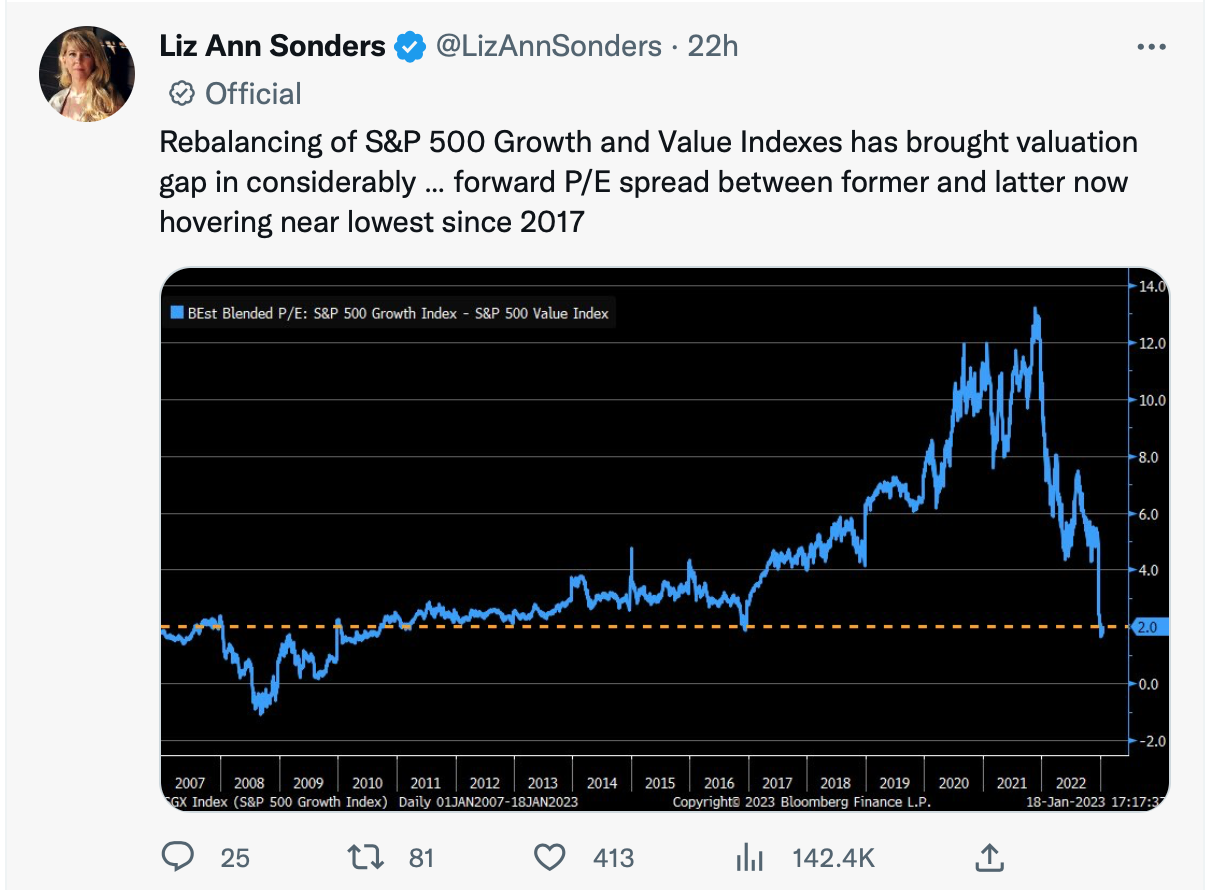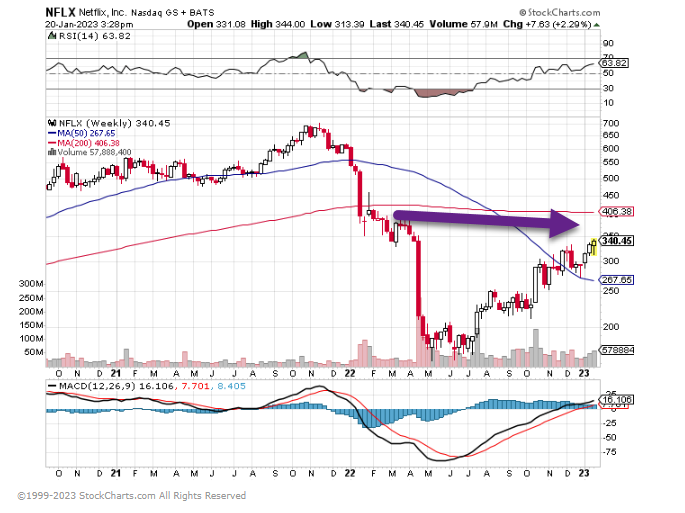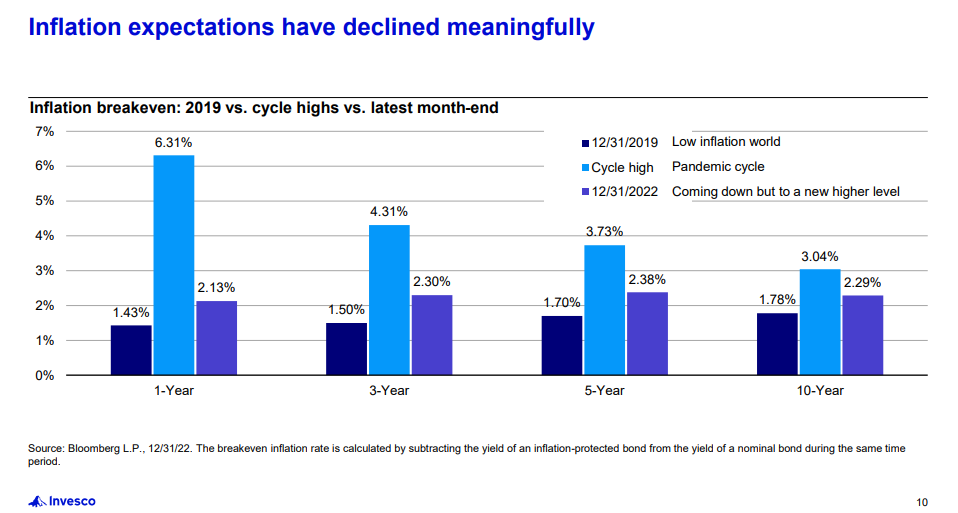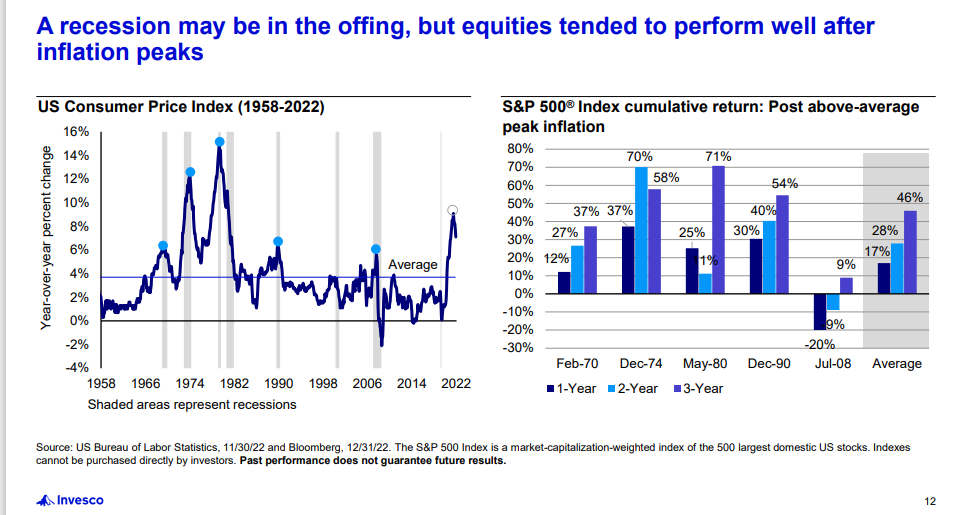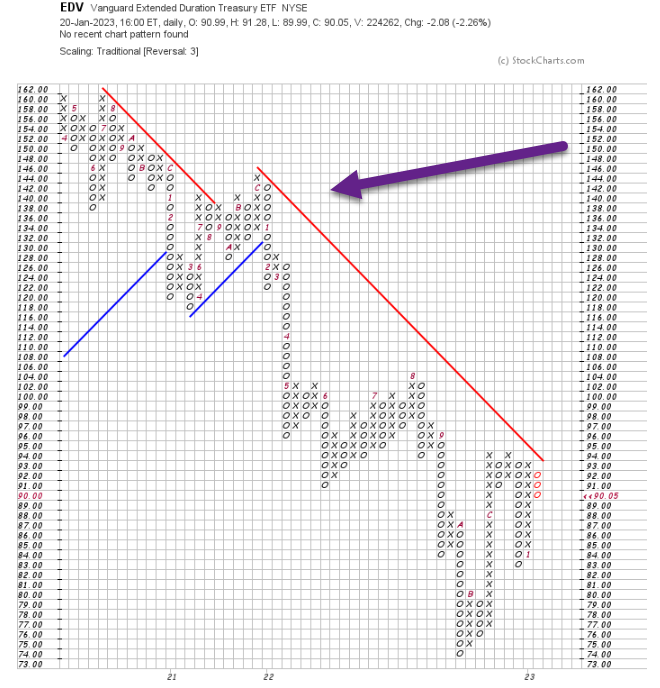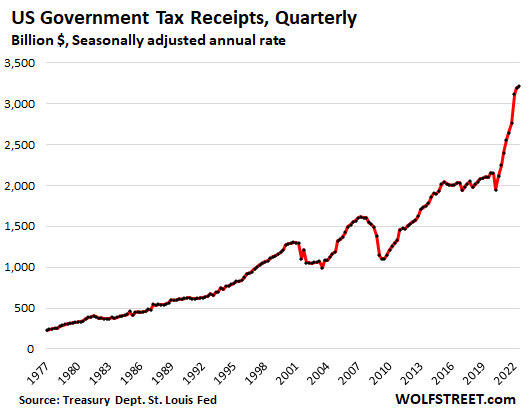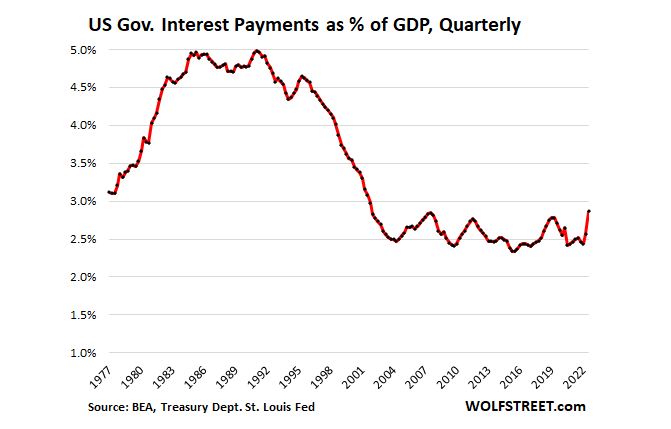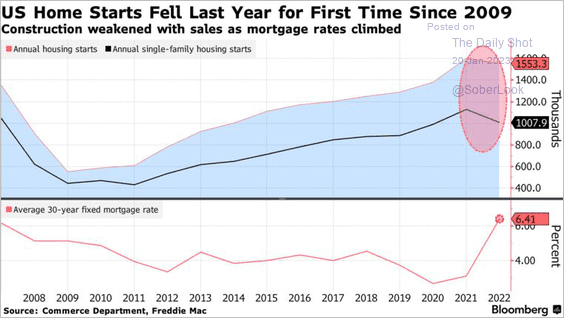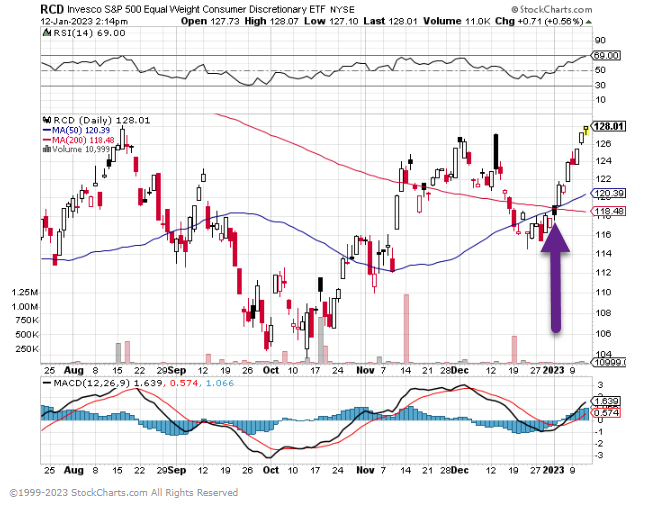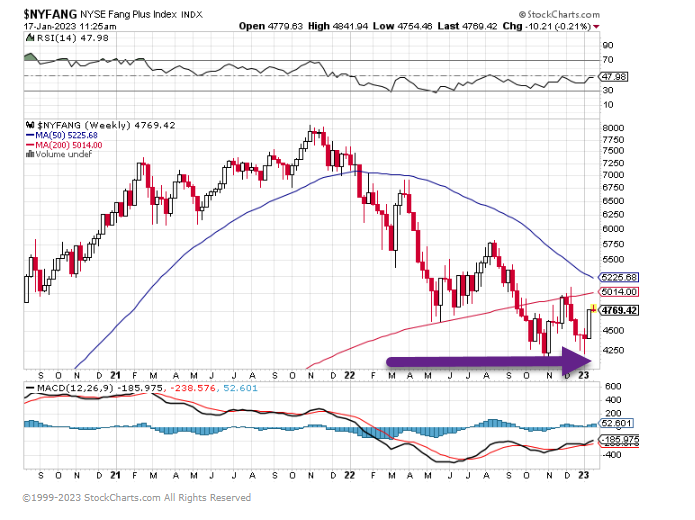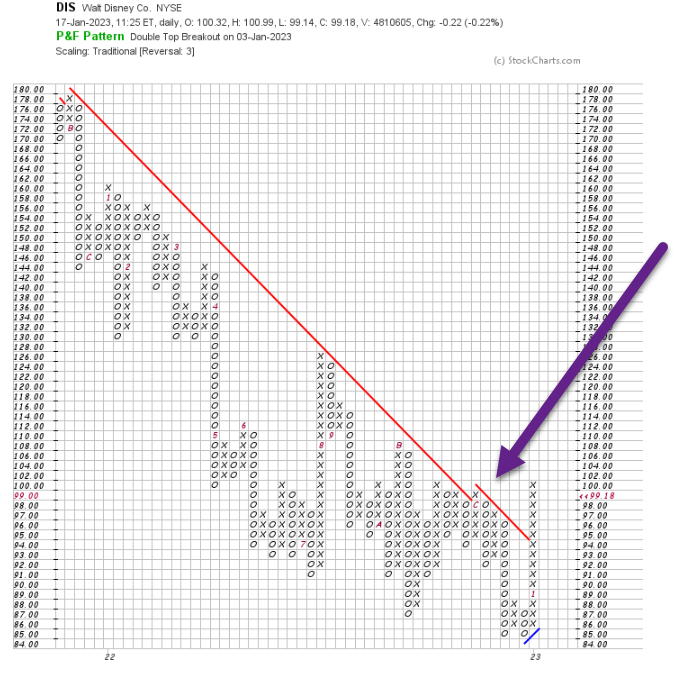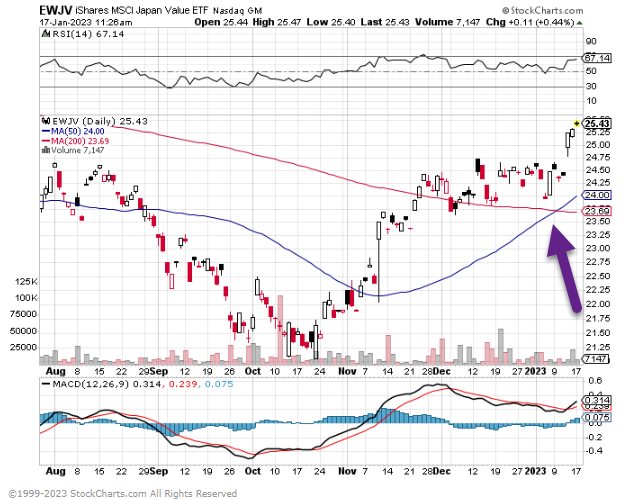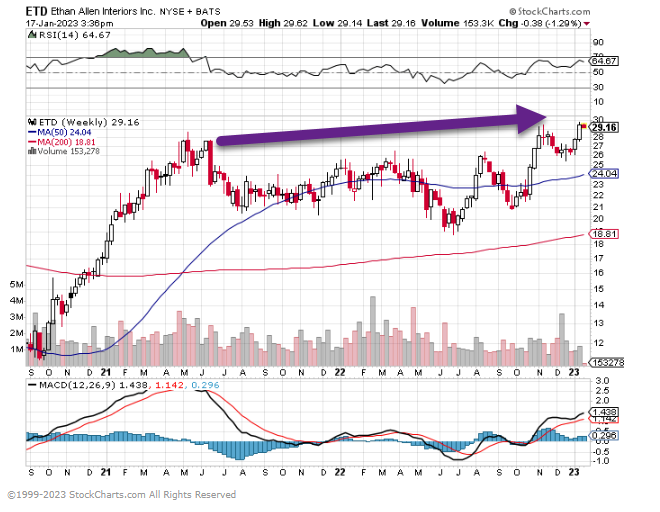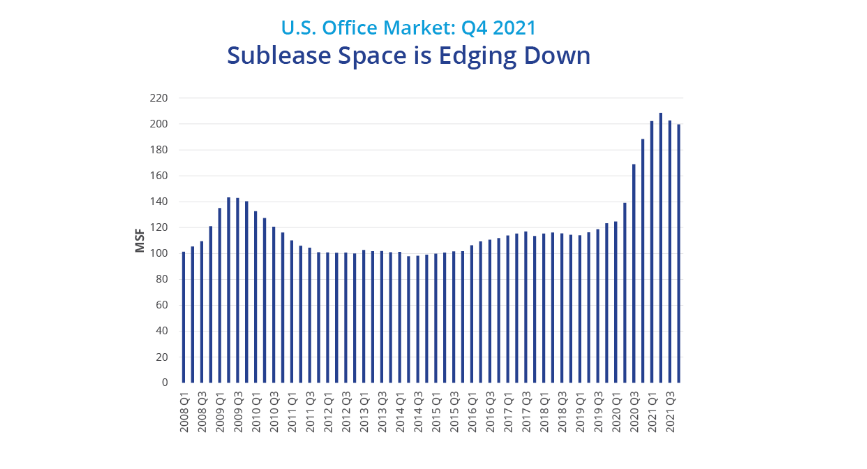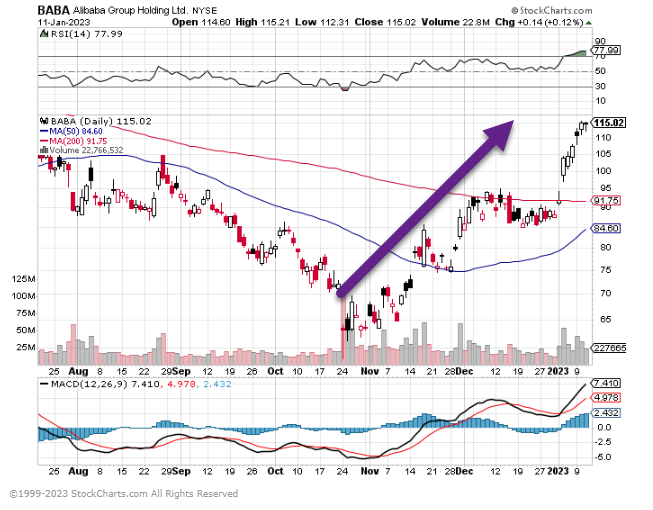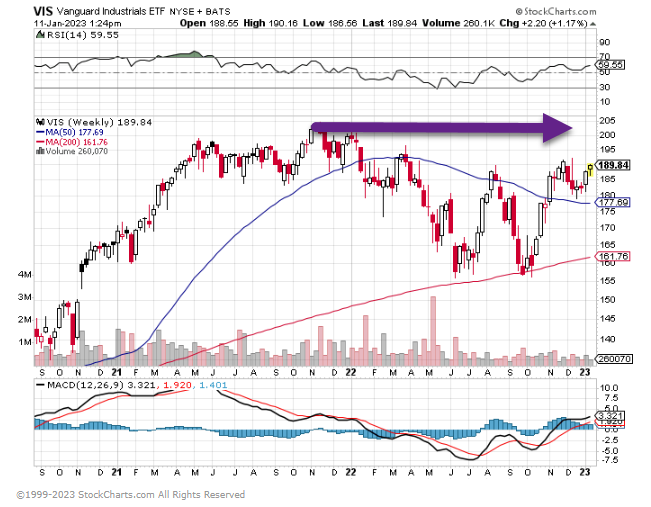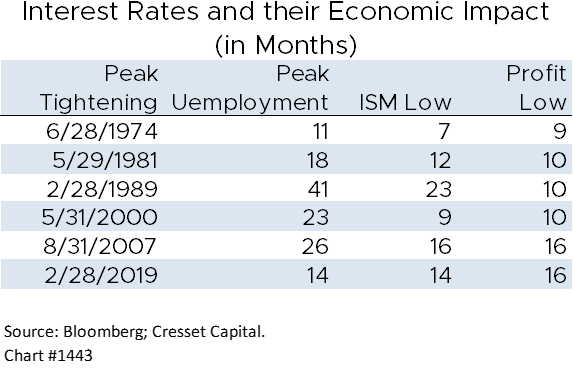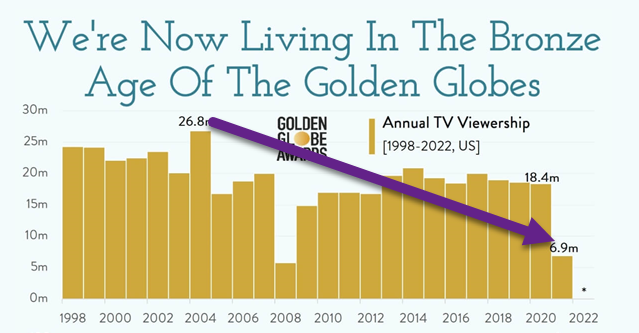1. Semiconductor ETF Technical Signal
SMH-50day thru 200day to upside …

2. What is the Market Telling Us About Inflation?
Torsten Slok Apollo-Recession fears are subsiding, and inflation swaps are pricing that inflation will be at the FOMC’s 2% target in July, see charts below. This has very significant implications for markets.
Most importantly, with inflation back at 2% within a few months, the Fed will soon stop being so hawkish. In other words, the market is telling us that the soft landing will be accomplished over the coming six months. And, if inflation in six months is no longer a problem, then the Fed put is coming back. Because then the Fed will again have the flexibility to focus on unemployment, growth, and earnings instead of focusing entirely on too high inflation.
This is all good news for credit, equity, and capital markets.

3. 10-Year Break Even Inflation 2.12%
@Charlie Bilello Finally, market-based inflation expectations are confirming the move lower, with 10-year breakevens down to 2.12%, their lowest level since February 2021.
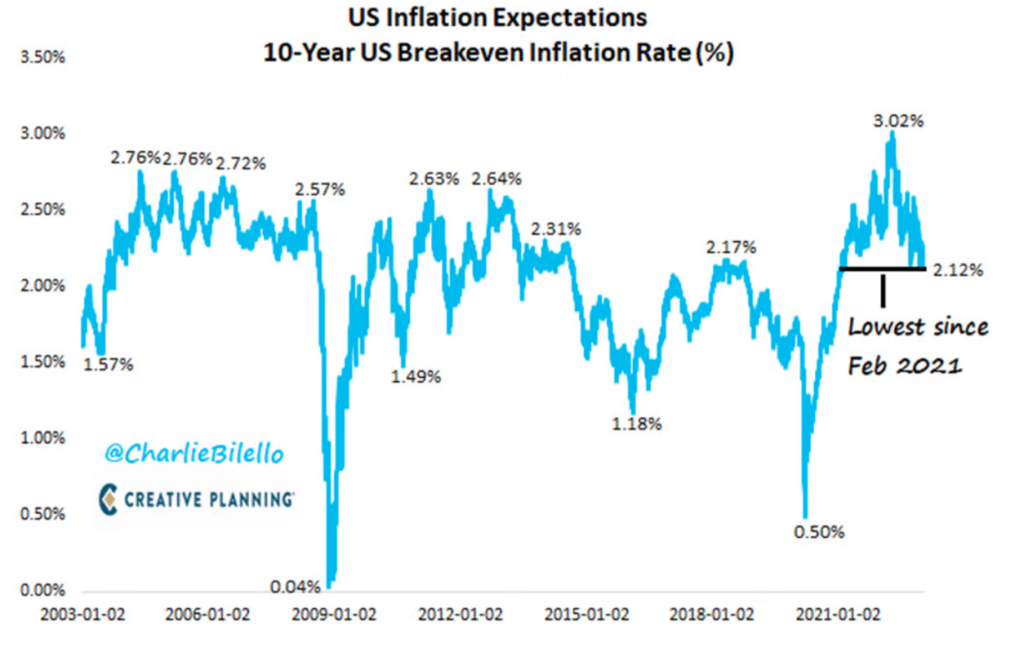
The last 8 recessions in the U.S. were all preceded by an inversion in the yield curve, though the lead time shows considerable variation.

4. Some Positive Trends
LPL Research

https://i0.wp.com/lplresearch.com/wp-content/uploads/2023/01/chart-8.png?ssl=1
5. Money Supply Goes Negative from Covid Spike Highs

https://twitter.com/NorthmanTrader
6. Gold Rally on U.S. Dollar Weakening…Closing in Early 2022 Highs

7. Decline of 2 Straight Months of Total Number of Hours Worked.
Bloomberg ByKristine AquinoMacquarie’s David Doyle and Neil Shankar argue that a number of red flags are popping up in the labor market and that a recession is on the cards. Among the stats they highlight is a decline for two straight months in the total number of hours worked, something that they point out has only only occurred in three other periods since 2006.

https://www.bloomberg.com/?sref=GGda9y2L
8. Existing Home Sales -36% From Highsalloway Blog

9. Multi-Family Starts Sill Below All-Time Highs from 1970s
By Wolf Richter for WOLF STREET.Construction starts of multifamily projects, such as condo and apartment buildings, with five or more units jumped by 14.5% in 2022 from the prior year, to 529,000 units, according to data from the Census Bureau today. This was:
- Up 35% from the range between 2015 and 2020.
- Up 75% from the range in the decade before the Financial Crisis.
- The highest annual total since 1986, nearly matching the three peak-years of that boom.
- Way below the crazy boom of the early 1970s that then turned into an epic bust.

10. Lean Into Their Strengths Rather Than Disdain Their Weaknesses
Marcus Aurelius was clearly torn about his fellow man. He was loving and kind and spoke repeatedly of serving the common good. He was also clearly frustrated and disappointed with the flaws of the people around him. Like many great men, he had trouble understanding that not everyone had his gifts, not all of them were capable of what he was capable of.
You can see in Meditations how he wrestled with these feelings. In the opening passage, he talks about just how obnoxious and annoying (and awful) the people he was likely to meet in the course of the upcoming day. And then, just as you think it can’t get any more depressing and dark, he turns around and reminds himself that they’re doing the best they can, and that it’s not their fault that they have been cut off from truth.
In the passage that inspired The Obstacle is the Way, Marcus is less forgiving. He talks about how the people who obstruct or bother us are “irrelevant”—how we can shut our minds off to them. It’s a theme that comes up a lot: People are a problem. People are weak. Push them away. You get the sense that he would have been hard to work for, hard to have as your father, hard to please—even for talented and committed people.
If only Marcus Aurelius could have heard the (fictional) advice from his adopted grandfather, Hadrian, that Marguerite Yourcenar writes into her prize-winning book Memoirs of Hadrian. “Our great mistake,” she has Hadrian say, “is to try to exact from each person virtues which he does not possess, and to neglect the cultivation of those which he has.” How much happier Marcus would have been had he been more able to see the good in people, and how much better a leader he could have been had he leaned into their strengths rather than disdained their weaknesses.
Each of us would benefit from that advice as well. We have to focus on what we can learn from other people. We have to focus on what is special and unique about them instead of zeroing in on the ways they are not as good as us. We have to be forgiving and patient, kind and appreciative. We have to engage with what they bring to the table, not lament the things they take from it. Then we have to work to make those people around us better…not write them off as hopeless and broken.
Lean Into Their Strengths Rather Than Disdain Their Weaknesses (dailystoic.com)



